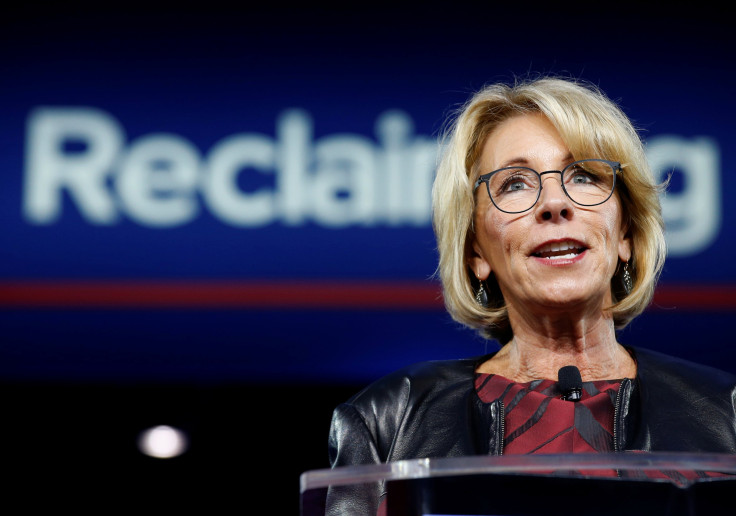Is Trump Good For Education? For-Profit College Stocks Rise Amid Regulation Delay

President Donald Trump’s administration has begun relaxing restrictions on for-profit colleges, and traders in shares of companies like Strayer Education Inc. (STRA) and Capella Education Co. (CPLA) have taken note.
For-profit college stocks soared in the week after the Department of Education announced a delay in the implementation of a regulation finalized in October 2014 by former President Barack Obama.
Shares of Strayer Education, a holding company for Strayer University, climbed 2.5 percent in the week following the March 6 announcement, hitting a high of $81.40 shortly after Monday market open, while Capella Education, the parent of Capella University, grew 1.8 percent over the same period, surpassing $78 Monday morning. Grand Canyon Education Inc. (LOPE), the parent of Grand Canyon University, rose 3.5 percent over the past week to an all-time high of $67.49, and Laureate Education Inc. (LAUR), which counts Walden University as one of its for-profit institutions and was formerly known as Sylvan Learning Systems, saw its shares rise 0.6 percent to nearly $13 Monday. DeVry Education Group Inc. (DV), known for its DeVry University, saw a more modest 0.4 percent rise over the past week.
The Department of Education initially required for-profit colleges, along with some nonprofit and public schools, to report data on the success of their job training programs by April 3, but under new Education Secretary Betsy DeVos, the date was pushed to July 1. The rule, which was originally slated for implementation on July 1, 2015, would cut back on federal funding for institutions whose programs did not lead to "gainful employment"— meaning graduates’ annual loan payments exceeded 20 percent of their income.
For-profit colleges, whose attendees tend to be disproportionately female, minority and low-income, have long faced criticism for their role in the student debt crisis. Data released from the Department of Education in September linked more than 35 percent of student debt defaults in 2013 to the institutions, despite their accounting for 1.3 million of the 17.3 million total enrollees in degree-granting postsecondary institutions — or 7.5 percent — in 2014, according to the National Center for Education Statistics.
Much research has shown that students can derive the same job opportunities from far less costly community colleges, which do not answer to shareholders.
© Copyright IBTimes 2024. All rights reserved.






















